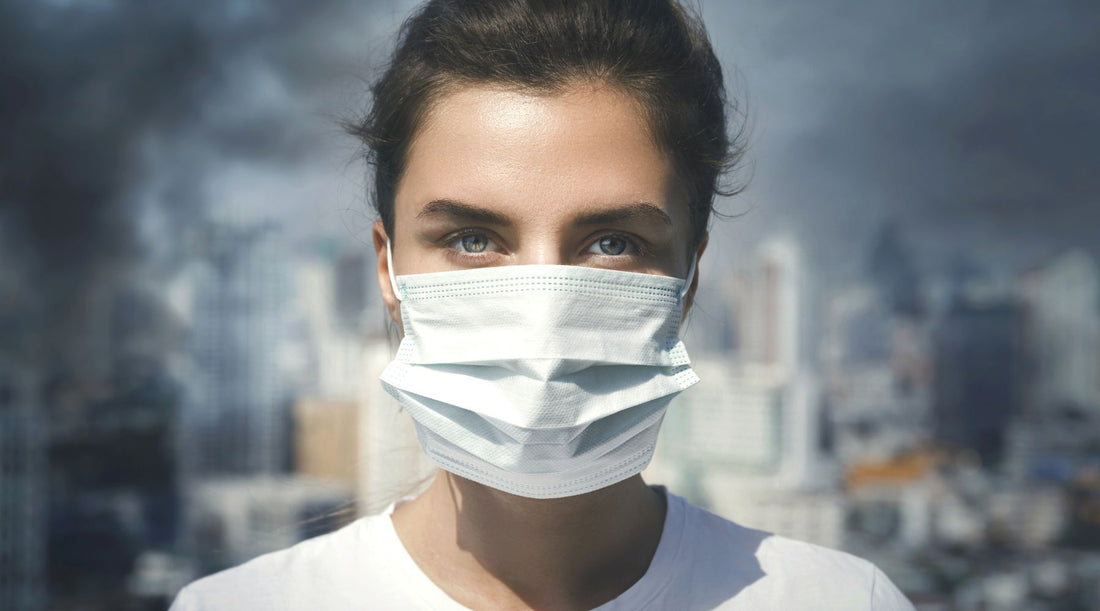Pollution, a byproduct of industrialization and urbanization, is a significant environmental concern with far-reaching effects on human health, including skin health. Airborne pollutants, such as particulate matter (PM), toxins, and chemicals, can penetrate the skin, causing various dermatological issues. Here are 10 significant ways pollution impacts the skin:
1. Accelerates Skin Aging
Pollutants like PM and nitrogen dioxide generate free radicals, which attack healthy skin cells and lead to oxidative stress. This accelerates collagen breakdown, causing premature wrinkles, fine lines, and sagging skin. Prolonged exposure to pollution makes the skin appear dull and aged.
2. Causes Hyperpigmentation
Pollution can trigger the overproduction of melanin, leading to dark spots, uneven skin tone, and pigmentation. These effects are often worsened by simultaneous exposure to UV radiation, which amplifies melanin activity.
3. Weakens Skin Barrier
The skin’s natural barrier protects it from external aggressors, but pollution compromises its integrity. Harmful particles penetrate the epidermis, depleting essential lipids and moisture, leaving the skin dry, sensitive, and prone to damage.
4. Induces Acne Breakouts
Pollution particles clog pores by mixing with sebum and dirt, creating an ideal environment for acne-causing bacteria. Urban areas with high pollution levels often see an increase in acne prevalence due to the accumulation of these impurities on the skin.
5. Triggers Eczema and Dermatitis
Pollutants like sulfur dioxide, heavy metals, and volatile organic compounds can irritate the skin, triggering inflammatory conditions like eczema and contact dermatitis. These reactions are more common in individuals with pre-existing sensitivities or compromised skin barriers.
6. Causes Skin Allergies
Airborne allergens and irritants, such as pollen, dust, and chemical residues, can result in redness, itching, and swelling. Prolonged exposure may lead to chronic allergic reactions, including urticaria or hives.
7. Leads to Skin Infections
Polluted environments are teeming with harmful microorganisms, which can infiltrate the skin through cuts, abrasions, or weakened barriers. This increases the risk of bacterial, viral, and fungal infections.
8. Promotes Oxidative Stress
Pollutants interact with the skin’s natural oils to create reactive oxygen species (ROS). These molecules damage cellular components like DNA and proteins, leading to inflammation, reduced cell regeneration, and visible signs of aging.
9. Causes Dehydration
Pollution strips the skin of its natural hydration, leading to dryness, flakiness, and irritation. This dehydration can make the skin feel tight and uncomfortable, with an increased risk of developing cracks and infections.
10. Aggravates Rosacea and Psoriasis
For individuals with rosacea or psoriasis, pollution worsens flare-ups. The toxins increase inflammation and irritation, making these chronic conditions harder to manage.
Protecting Your Skin from Pollution
To mitigate the adverse effects of pollution, consider these steps:
- Cleanse Regularly: Use gentle cleansers to remove pollutants from your skin daily.
- Apply Antioxidants: Products with vitamins C and E can neutralize free radicals.
- Hydrate: Keep your skin moisturized to maintain its barrier function.
- Wear Sunscreen: A broad-spectrum sunscreen protects against UV rays and pollution.
- Create a Barrier: Use serums or creams that form a protective shield against environmental aggressors.
Conclusion
Pollution is a silent yet potent enemy of skin health, causing issues ranging from dryness and irritation to chronic inflammatory conditions. By understanding its effects and taking preventative measures, you can protect your skin and maintain a healthy, glowing complexion.


